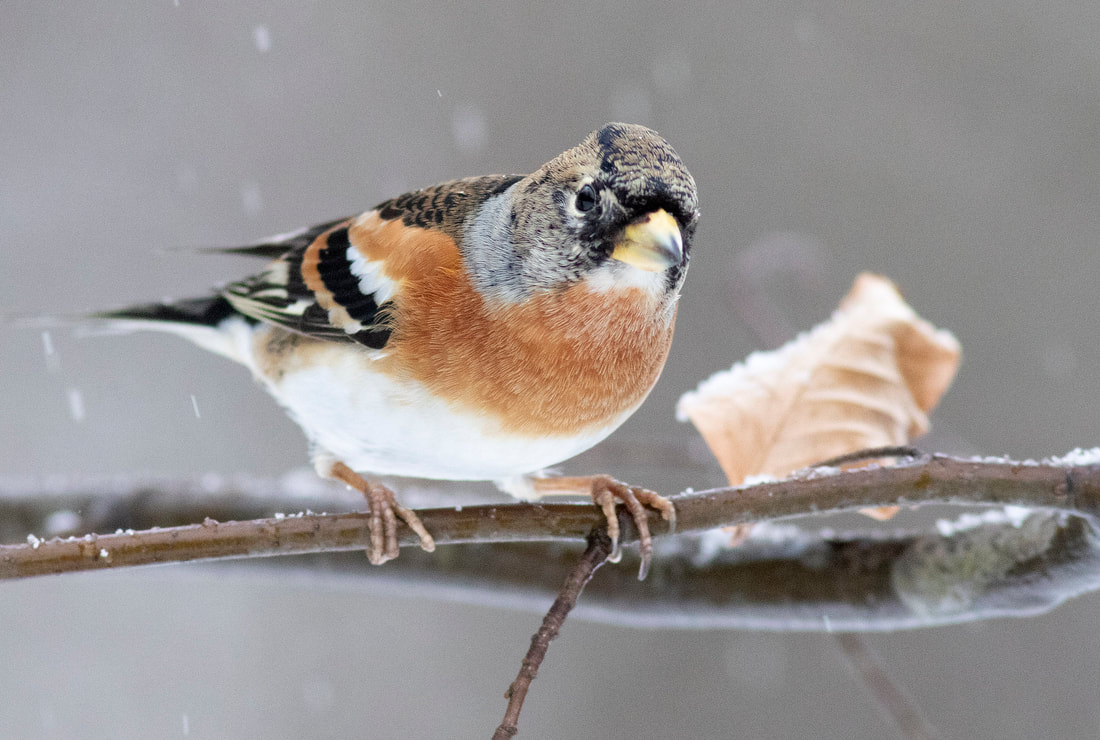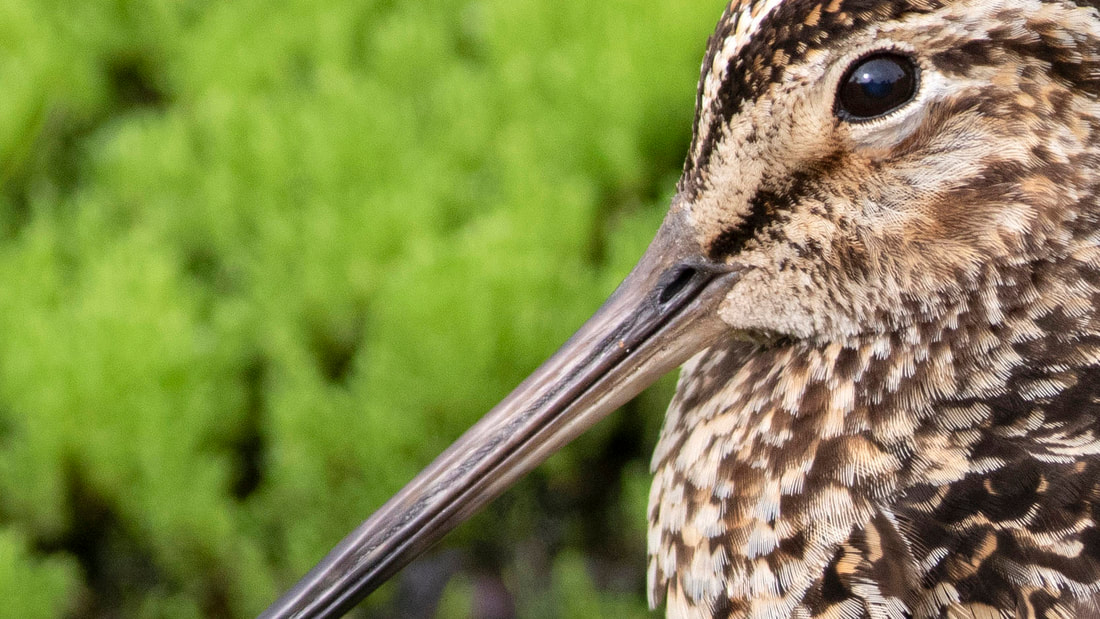|
A second calendar year Scarlet Rosefinch was found singing in Kalandsvika nature reserve two days ago. The reserve is located about ten kilometers south of Bergen in western Norway. Being only the third record in the municipality, the bird became quite popular among local birders. I visited the site this morning. Half an hour after my arrival at 6:30, 33 species were already recorded, but there was no sign of the Rosefinch. However, just before the rain started pouring down at about 7:00, the Scarlet Rosefinch eventually sang a few strophes. After a minute or so it entered silence mode again.
Another great sighting in Bergen was done by local birder Walter Lemme two days ago. He found a male Red-backed Shrike at Tausamyrane, at the foothills of mount Gullfjellet (the highest mountain in Bergen, reaching an altitude of 1 000 masl.). It was reported several times in the same area yesterday, and I gave it a try today. Fellow birder Bert de Bruin was already at the site when I arrived, and he had already located the bird. He had seen a female as well, making everything more interesting! We studied the birds for half an hour, and noticed several behavioral traits related to breeding. Red-backed Shrikes are far from annual breeders in the county, and this was only the 4th. record ever for Bergen municipality.
When watching the pair of shrikes, a slightly familiar birdsong was uttered from Salix vegetation close to us; a Scarlet Rosefinch! The bird was moving around while singing, and we got short views of it before it left us (for good?). Like the bird in Kalandsvika, it was a 2nd. calendar year male. The fourth record in Bergen, and generally a really rare bird in the county.
At lunchtime Thursday 5 October 2023 fellow birder Bert de Bruin was in the field, and sent a photo of a deviant flycatcher he just had seen. Bert and another birder, Julian Bell, had just left the bird that was present an hours drive from Bergen in Western Norway. It looked like a stange Spotted Flycatcher, which it also was initially identified as. However, Bert was not satisfied with this, and sent a picture for comments. The boc-pic was rather poor, but the bird did look stange. The prominent eye-ring that was clearly visible broke the legs of the spotted idea, and was the beginning of the largest twitch in Hordaland county up to date. The Dark-sided Flycacher is breeding in Central and Southeast Siberia, and spend the winter in Southeast Asia. It has only been recorded once before in Europe and the Western Palearctic before, at Iceland on 1 October 2012.
Just before 11 a.m. on Friday 28th. of October 2022 I received a call from fellow birder Eirik Nydal Adolfsen. He was whispering. - Frode, I've just found a new bird for Norway. A Common Yellowthroat! Eirik, a legendary local rarity finder with an impressive avian-rarity_finding_cv. was calling from Sæle, about 60 kilometers northwest of Bergen. This was it! Twitchers from the Bergen area were on site within an hour or so, but the bird proved to be extremely skulky. It had not been seen or heard after the initial observation. I was pretty lucky though, after an hour or so, The Star briefly showed well just in front of me. It was jumping from branch to branch on Rhododendron-bushes, just above the ground - and disappeared just as fast as it had popped up. Only two of us saw it, and the bird was not seen during the rest of the day. I managed to shoot a few photos, but all the settings on the camera were locked and fucked up - max speed and iso in really dark conditions. The pictures below are therefore extremely brightened and enhanced in Photoshop. Hurds of twitchers visited the site during the following weekend, but the bird proved to be extremely elusive. Many of the visitors were not able to spot it.
Through my home-office window I have been able to study some of the hundreds of Bramblings that have visited my feeder this winter. There is lots of variation in the plumage, but usually only when it comes to the abrasion of head feathers; the more abraded, the more black they (males) appear. However, some very few males (have not seen this in females) have so-called pea-throats. This means that they have a white throat with variable distribution. Most only show a pea-sized spot below the bill, and one male also showed an all white throat patch, streaching from the bill to the chest (see below).
After a few hours of what I suppose was both heavy and frustrating work in the field, fellow bird recorder Eirik Nydal Adolfsen managed to find and identify the first Trumpeter Finch in Hordaland county. This was also only the second record in Norway, following a long-staying bird in Østfold county from late June until late September 2013.
Trumpeter Finch Bucanetes githagineus at Breivik in Øygarden (western Norway) June 2017. The second record in Norway.
Here's my timeline from the first message about the bird, until...
12:00 Starting up a Skype-meeting on a work issue.
12:07 Getting a call from Eirik (the finder), but I am occupied in the meeting. 13:40 Trumpeter Finch published on the local messaging system Band. 13:41 Trying to call Eirik the finder, but his phone is shut off or batteries are dead. 13:42 Frustration. Having the White-winged Lark dip from 2015 fresh in mind. 14:30 No updates on the bird. 14:50 Twitchers are finally on their way, but a car accident is blocking the road and they are delayed. 15:30 Still no updates on the bird. 16:00 I'm coaching the Minde boys 2008 in soaking weather. Only five participants. Should have been cancelled. 17:00 Phone check after training. No updates on the bird. 17:10 Shopping dinner on our way back from the football training. 17:15 More birders have arrived at the site, but no sign of the star of the game. 17:20 Making pasta bolognese in 15 minutes. The pasta became pretty al-dente today... 17:30 Gosh. Still no updates on the bird. 18:00 A kind neighbour accepted a visit from two kids that I was supposed to handle this evening. 18:15 Finally in the car on my way to Øygarden - six hours after the first notification. 18:30 Reports from the people in the field: the bird has not been seen for several hours. 19:05 A White-tailed Eagle pass my car while driving through Rong. Not slowing down. 19:30 Arriving the site. 19:31 The bird seen briefly by a couple of birders after several hours of searching. it flew away... 19:43 After 15 minutes of oppressed worries we finally managed to find the bird. It was feeding on the ground together with Greenfinches, Linnets and Wheatears on a small patch of calcareous sand with sparse vegetation. |
StorymapsBlog archive
May 2024
|

















 RSS Feed
RSS Feed
